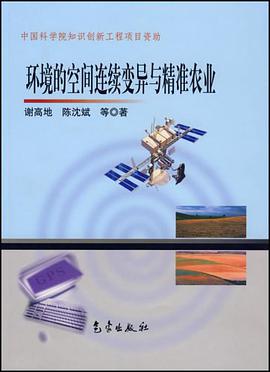

具体描述
本书使用微观语言分析法对英汉问候语和告别语进行
了系统对比研究,内容包括其结构特征、社交功能、具体使
用等,并且通过语言调查统计,对英汉问候语和告别语在表
达方式和使用对象等方面的差异进行了量化分析,在充分
肯定英美礼貌语言研究权威理论模式的同时,以实际语言
事实指出其不足之处,说明必须加强礼貌语言对比研究,促
进跨文化语言交际。本书可供语言研究者、英语教师及其
他有兴趣的英语读者研读。
作者简介
目录信息
Introduction
Chapter 1 The Structure of Greetings and Partings
1.1 Greetings and Partings as Conversational
Components
1.2 Greetings and Partings as Speech Units
1.3 Greetings and Partings as Adjacency Pairs
Chapter 2 The Functibn of Greetings and Partings
2.1 Greetings and Partings as Illocutionary Acts
2.2 Greetings and Partings as Access Rituals
2.3 Greetings and Partings as Linguistic
Routines of Politeness
Chapter 3 The Use of Greetings and Partings
3.1 Greeting and Parting Strategies: Brown
and Levinson's Model
3.2 Social Factors in Greetings and Partings;
Laver's Framework
3.3 Other Factors in Greetings and Partings
Chapter 4 Greetings and Partings in English and
Chinese: A Contrastive Study of Their
Repertoire
4.1 Data Collection
4.2 Varieties of English and Chinese Greetings
and Partings
4.3 Difference in English and Chinese Greetings
and Partings
4.4 English and Chinese Terms of Address
Chapter 5 Greetings and Partings in English and
Chinese: Experiments on Their Use
5.1 Experimental Method
5.2 Frequency of Use of English and Chinese
Greetings and Partings
5.3 Degree of Politeness in English and Chinese
Greetings and Partings
5.4 Social Factors Constraining the Use of English
and Chinese Greetings and Partings
5.5 The Use of English and Chinese Terms of
Address
Chapter 6 Greetings and Partings in Cross-Cultural
Communication and Conclusion
6.1 Greetings and Partings Between English
and Chinese Speakers: Problems in
Cross-Cultural Communication
6.2 Conclusion
Appendix 1 A Questionnaire on English Greetings
and Partings
Appendix 11 A Questionnaire on Chinese Greetings
and Partings
References
Index
Figures
Figure 1 Summary Diagram of Clark's Analysis of
Conversational Structure
Figure 2 Modified Diagram of Greetings and Part-
ings as Components of Conversational
Structure
Figure 3 Laver's Diagram of the Factors That Con-
strain the Choice of Formulaic Greeting
and Parting Phrases in British English
Figure 4 Summary Diagram of the Classification
of Greetings
Figure 5 Summary Diagram of the Classification
of Partings
Tables
Table 1
Table 2
Table 3
Table 4
Table 5
Table 6
Table 7
Table 8
English and Chmese Kinship Terms
Frequency Scores of Specified English
and Chinese Greeting Expressions
Frequency Scores of Specified English
and Chinese Parting Expressions
Politeness Scores of Specified English
Greeting Expressions
Politeness Scores of Specified Chinese
Greeting Expressions
Politeness Scores of Specified English
Parting Expressions
Politeness Scores of Specified Chinese
Parting Expressions
Politeness Scores of Specified Responses
to English Greeting
Politeness Scores of Specified Responses
to Chinese Greeting
Politeness Scores of Specified Responses
to English Parting
Politeness Scores of Specified Responses
to Chinese Parting
Percentage of English Informants Using
Specified Greeting Expressions to
Different Types of Addressees
Percentage of Chinese Informants Using
Specified Greeting Expressions to
Different Types of Addressees
Percentage of English Informants Using
Specified Parting Expressions to
Different Types of Addressees
Percentage of Chinese Informants Using
Specified Parting Expressions to
Different Types of Addressees
Evaluation of Terms of Address as Polite-
ness Intensifiers in English Greetings
Evaluation of Terms of Address as Polite-
ness Interisifiers in Chinese Greetings
Evaluation of Terms of Address as Polite-
ness Intensifiers in English Partings
Evaluation of Terms of Address as Polite-
ness Intensifiers in Chinese Partings
Evaluation of Terms of Address as Greet-
ings in English and Chinese
Percentage of English Informants Using
Specified Terms of Address to Different
Types of Addressees
Table 22 Percentage of Chinese Informants Using
Specified Terms of Address to Different
Types of Addressees
Table 23 Percentage of English Informants Prefer-
ring Specified Terms of Address from
Different Types of Speakers
Table 24 Percentage of Chinese Informants Prefer-
ring Specified Terms of Address from
Different Types of Speakers
参考译文
英汉问侯语告别语对比研究
引言
第一章 问侯语和告别语的结构
1.1 问候语和告别语作为会话成分
1.2 问候语和告别语作为言语单位
1.3 问候语和告别语作为毗连语对
第二章 问候语和告别语的功能
2.1 问候语和告别语作为言外之行
2.2 问候语和告别语作为接近礼仪
2.3 问候语和告别语作为常规礼貌用语
第三章 问候语和告别语的使用
3.1 问候语和告别策略:布朗和莱文森的模式
3.2 问候语和告别的社会因素:莱佛的框架
3.3 问候语和告别的其他因素
第四章 英汉问候语和告别语语汇对比研究
4.1 语料采集
4.2 英汉问候语和告别语的类别
4.3 英汉问候语和告别语的差异
4.4 英语和汉语的称呼
第五章 英汉问候语和告别语使用对比实验
5.1 实验方法
5.2 英汉问候语和告别语的使用频度
5.3 英汉问候语和告别语的礼貌程度
5.4 制约英汉问候语和告别语使用的社会因素
5.5 英语和汉语称呼的使用
第六章 跨文化交际中的问候语和告别语与结论
6.1 英语和汉语使用者之间的问候与告别
――跨文化交际中的问题
6.2 结论
索引
后记
· · · · · · (收起)
Chapter 1 The Structure of Greetings and Partings
1.1 Greetings and Partings as Conversational
Components
1.2 Greetings and Partings as Speech Units
1.3 Greetings and Partings as Adjacency Pairs
Chapter 2 The Functibn of Greetings and Partings
2.1 Greetings and Partings as Illocutionary Acts
2.2 Greetings and Partings as Access Rituals
2.3 Greetings and Partings as Linguistic
Routines of Politeness
Chapter 3 The Use of Greetings and Partings
3.1 Greeting and Parting Strategies: Brown
and Levinson's Model
3.2 Social Factors in Greetings and Partings;
Laver's Framework
3.3 Other Factors in Greetings and Partings
Chapter 4 Greetings and Partings in English and
Chinese: A Contrastive Study of Their
Repertoire
4.1 Data Collection
4.2 Varieties of English and Chinese Greetings
and Partings
4.3 Difference in English and Chinese Greetings
and Partings
4.4 English and Chinese Terms of Address
Chapter 5 Greetings and Partings in English and
Chinese: Experiments on Their Use
5.1 Experimental Method
5.2 Frequency of Use of English and Chinese
Greetings and Partings
5.3 Degree of Politeness in English and Chinese
Greetings and Partings
5.4 Social Factors Constraining the Use of English
and Chinese Greetings and Partings
5.5 The Use of English and Chinese Terms of
Address
Chapter 6 Greetings and Partings in Cross-Cultural
Communication and Conclusion
6.1 Greetings and Partings Between English
and Chinese Speakers: Problems in
Cross-Cultural Communication
6.2 Conclusion
Appendix 1 A Questionnaire on English Greetings
and Partings
Appendix 11 A Questionnaire on Chinese Greetings
and Partings
References
Index
Figures
Figure 1 Summary Diagram of Clark's Analysis of
Conversational Structure
Figure 2 Modified Diagram of Greetings and Part-
ings as Components of Conversational
Structure
Figure 3 Laver's Diagram of the Factors That Con-
strain the Choice of Formulaic Greeting
and Parting Phrases in British English
Figure 4 Summary Diagram of the Classification
of Greetings
Figure 5 Summary Diagram of the Classification
of Partings
Tables
Table 1
Table 2
Table 3
Table 4
Table 5
Table 6
Table 7
Table 8
English and Chmese Kinship Terms
Frequency Scores of Specified English
and Chinese Greeting Expressions
Frequency Scores of Specified English
and Chinese Parting Expressions
Politeness Scores of Specified English
Greeting Expressions
Politeness Scores of Specified Chinese
Greeting Expressions
Politeness Scores of Specified English
Parting Expressions
Politeness Scores of Specified Chinese
Parting Expressions
Politeness Scores of Specified Responses
to English Greeting
Politeness Scores of Specified Responses
to Chinese Greeting
Politeness Scores of Specified Responses
to English Parting
Politeness Scores of Specified Responses
to Chinese Parting
Percentage of English Informants Using
Specified Greeting Expressions to
Different Types of Addressees
Percentage of Chinese Informants Using
Specified Greeting Expressions to
Different Types of Addressees
Percentage of English Informants Using
Specified Parting Expressions to
Different Types of Addressees
Percentage of Chinese Informants Using
Specified Parting Expressions to
Different Types of Addressees
Evaluation of Terms of Address as Polite-
ness Intensifiers in English Greetings
Evaluation of Terms of Address as Polite-
ness Interisifiers in Chinese Greetings
Evaluation of Terms of Address as Polite-
ness Intensifiers in English Partings
Evaluation of Terms of Address as Polite-
ness Intensifiers in Chinese Partings
Evaluation of Terms of Address as Greet-
ings in English and Chinese
Percentage of English Informants Using
Specified Terms of Address to Different
Types of Addressees
Table 22 Percentage of Chinese Informants Using
Specified Terms of Address to Different
Types of Addressees
Table 23 Percentage of English Informants Prefer-
ring Specified Terms of Address from
Different Types of Speakers
Table 24 Percentage of Chinese Informants Prefer-
ring Specified Terms of Address from
Different Types of Speakers
参考译文
英汉问侯语告别语对比研究
引言
第一章 问侯语和告别语的结构
1.1 问候语和告别语作为会话成分
1.2 问候语和告别语作为言语单位
1.3 问候语和告别语作为毗连语对
第二章 问候语和告别语的功能
2.1 问候语和告别语作为言外之行
2.2 问候语和告别语作为接近礼仪
2.3 问候语和告别语作为常规礼貌用语
第三章 问候语和告别语的使用
3.1 问候语和告别策略:布朗和莱文森的模式
3.2 问候语和告别的社会因素:莱佛的框架
3.3 问候语和告别的其他因素
第四章 英汉问候语和告别语语汇对比研究
4.1 语料采集
4.2 英汉问候语和告别语的类别
4.3 英汉问候语和告别语的差异
4.4 英语和汉语的称呼
第五章 英汉问候语和告别语使用对比实验
5.1 实验方法
5.2 英汉问候语和告别语的使用频度
5.3 英汉问候语和告别语的礼貌程度
5.4 制约英汉问候语和告别语使用的社会因素
5.5 英语和汉语称呼的使用
第六章 跨文化交际中的问候语和告别语与结论
6.1 英语和汉语使用者之间的问候与告别
――跨文化交际中的问题
6.2 结论
索引
后记
· · · · · · (收起)
读后感
评分
评分
评分
评分
评分
用户评价
评分
评分
评分
评分
评分
相关图书
本站所有内容均为互联网搜索引擎提供的公开搜索信息,本站不存储任何数据与内容,任何内容与数据均与本站无关,如有需要请联系相关搜索引擎包括但不限于百度,google,bing,sogou 等
© 2025 book.quotespace.org All Rights Reserved. 小美书屋 版权所有




















